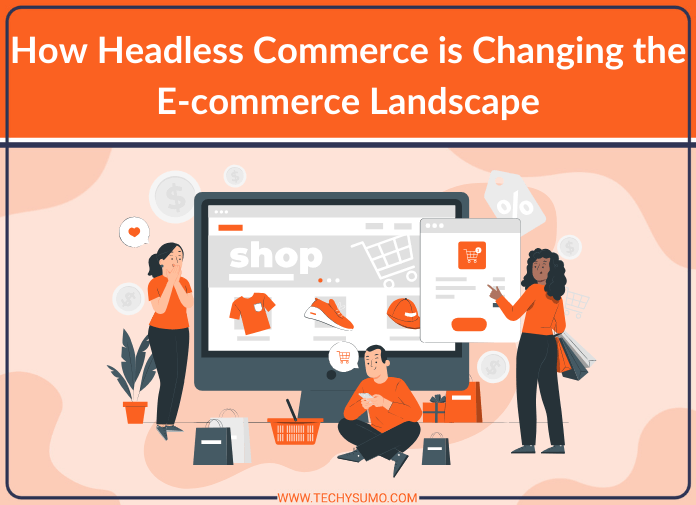The online shopping space is constantly evolving, and businesses must stay updated with emerging trends if they wish to stay ahead. Perhaps the most significant thing to emerge in recent years has been headless commerce. Compared to classic platforms, headless commerce decouples the front-end presentation layer from the back-end infrastructure, enabling companies to build smooth and extremely personalized shopping experiences.
This change isn’t about technology it’s about delivering customers what they are looking for: speed, convenience, and consistency in all digital touchpoints. Regardless of your business size, whether enterprise or small business, partnering with a solid Ecommerce Development Company can facilitate adoption and maximize headless commerce benefits.
Understanding Headless Commerce
Headless commerce is a trend wherein the front end that the customer interacts with (e.g., website or mobile app) is decoupled from back-end processes (e.g., product management or checkout). With such an arrangement, companies can provide differentiated shopping experiences through various channels, including websites, applications, voice assistants, and smart devices.
Traditional e-commerce websites are limited in terms of customization, and companies struggle to respond to customer needs quickly. Through headless commerce, businesses can develop personalized customer experiences without being constrained by the available templates or themes.
Why Companies Are Embracing Headless Commerce
The shift to headless commerce is driven by demands for greater flexibility, customization, and performance. Below are the reasons why businesses are making the shift:
1. Seamless Omnichannel Experience
Consumers today interact with brands through numerous channels—mobile apps, connected devices, and even social media. Headless commerce enables brands to create a cohesive experience on each touchpoint so that consumers can start shopping on one channel and resume on another.
For instance, a user may begin looking for products on a PC but complete the transaction via a mobile app without losing their choices or encountering usability issues. Such uninterrupted continuity keeps customers and improves sales conversion.
2. Quicker Load Times and Smoother Operation
Slow sites push away customers. As the front-end and back-end function separately in headless commerce, companies can then optimize each one of them individually. This means quicker page loading, better navigation, and improved conversion rates.
Also, with content served through APIs, companies can introduce progressive web applications (PWAs), providing lightning-fast experiences that are similar to native mobile applications. An efficient, responsive shopping experience decreases cart abandonment and makes customers stay.
3. Unparalleled Personalization and Branding
Most of the traditional platforms come with design constraints. Headless commerce removes these constraints, enabling businesses to construct bespoke shopping experiences that truly reflect their brand.
For instance, fashion brands may create rich, interactive user interfaces that present collections in an appealing manner. In the same vein, technology retailers may provide extremely interactive product comparison features that aid in customer decision-making.
4. Future-Proofing Your Business
Trends in e-commerce themselves are continually changing. Headless commerce provides the ability to add new technologies, such as AI-driven product recommendations and voice search, without needing to restructure the whole website.
Enabled by AI, chatbots can improve customer service, while augmented reality features allow customers to visualize products before making a purchase. Keeping up with such technologies allows companies to remain competitive in a rapidly changing marketplace.
How Magento Supports Headless Commerce
Magento is among the most notable headless commerce-supported platforms. Its API-first design allows businesses to integrate custom front-end frameworks without sacrificing good back-end functionality.
Companies can utilize Magento to:
- Use APIs to connect to other sales channels.
- Implement advanced features like AI-based chatbots and customized product suggestions.
- Scale easily as your business grows.
The agility of Magento facilitates the usage of varying front-end technologies like React, Vue.js, or Angular to develop better user interfaces. Installation of headless commerce with Magento also demands professionalism. Partnering with a Professional Magento Development Company confirms smooth deployment that prevents chances of performance as well as security failures.
Key Features of a High-Performing Headless E-commerce Store

In order to maximize headless commerce, an e-commerce store should possess certain features that make it customer-friendly and user-friendly.
1. API-First Architecture
APIs are the backbone of headless commerce, providing real-time communication between front-end and back-end. This allows companies to dynamically update product listings, inventory, and prices.
2. Tailored Customer Experiences
Headless commerce enables companies to gather and analyze customer data with ease. Brands can provide personalized suggestions, targeted communications, and tailored content through AI-driven insights based on purchasing habits.
For example, online stores can shop through history to introduce users to suitable product suggestions that can enhance the chances of conversion.
3. Interoperability with Emerging Technology
From product previewing through AR to voice shopping without hands, headless commerce makes it easy to integrate the next generation of ideas into everyday workflows without turning everything around. Voice commerce is expanding, for example, with more people using smart assistants like Alexa and Google Assistant to shop without using their hands. A headless setup makes it easy for brands to integrate such voice-based conversations.
4. Security and Reliability
Online transactions require data security. Headless commerce implementations enable companies to install strong security protocols, including end-to-end encryption and secure payment processing, that provide customer confidence and regulatory compliance.
Headless commerce further mitigates prospective risks by delinking front-end display layers from central business rules, lowering risk from cyber threats.
As e-commerce continues to evolve, headless commerce is rapidly transforming the way businesses build and scale their online stores. The flexibility to decouple the front-end from the back-end allows companies to offer seamless customer experiences across various platforms. Similarly, when deciding whether to work with professional Magento developers or general coders, businesses must consider the importance of expertise and tailored solutions. Just as headless commerce empowers brands with customization and agility, professional Magento developers bring deep knowledge and industry-specific solutions that can significantly enhance the performance and scalability of your e-commerce store.
The Role of Experts in Headless Commerce Implementation
It takes technical skill and strategy to adopt a headless commerce solution. Most companies try to transition on their own, ending up with difficulties around development complexity and system integration.
Collaboration with professional developers guarantees:
- Seamless migration without the impact of operational disruption.
- Optimized front-end performance for enhanced customer experience.
- Smooth API and third-party tool integration to leverage maximum functionality.
With specialists, companies are also able to obtain frequent upkeep and servicing such that their systems work properly and change according to future market needs.
Conclusion
Headless commerce is transforming e-commerce with more flexibility, agility, and richer customer experiences for businesses. As headless commerce goes beyond the limitations of the past, brands have the liberty to design customized shopping experiences that cater to changing customer demands.
If your goal is to provide rich experiences, integrate new technologies, or optimize performance, headless commerce provides the building blocks to innovate and scale.
To realize the full potential of headless commerce, collaboration with industry experts is crucial. Whether beginning from scratch or re-architecting a current platform, investment in the right development team guarantees long-term success and competitive advantage in the digital space.




